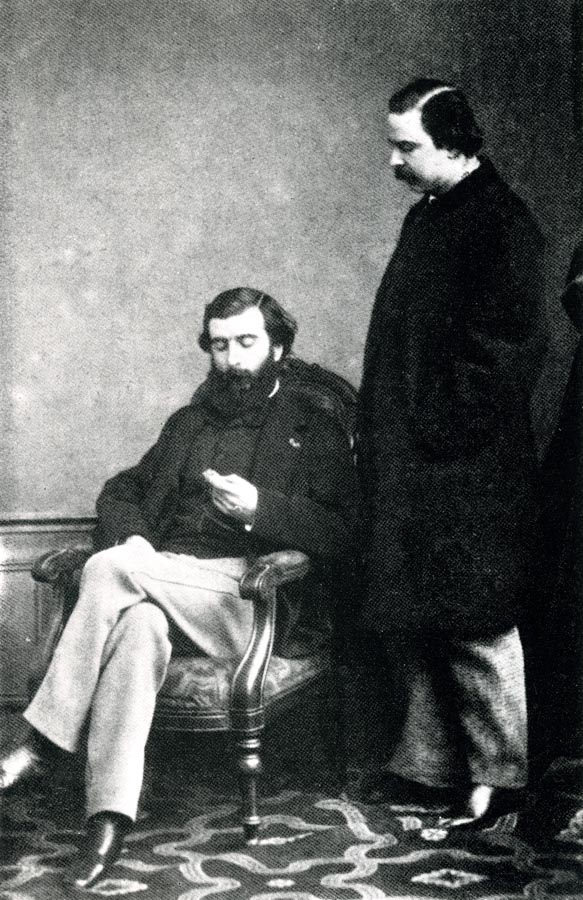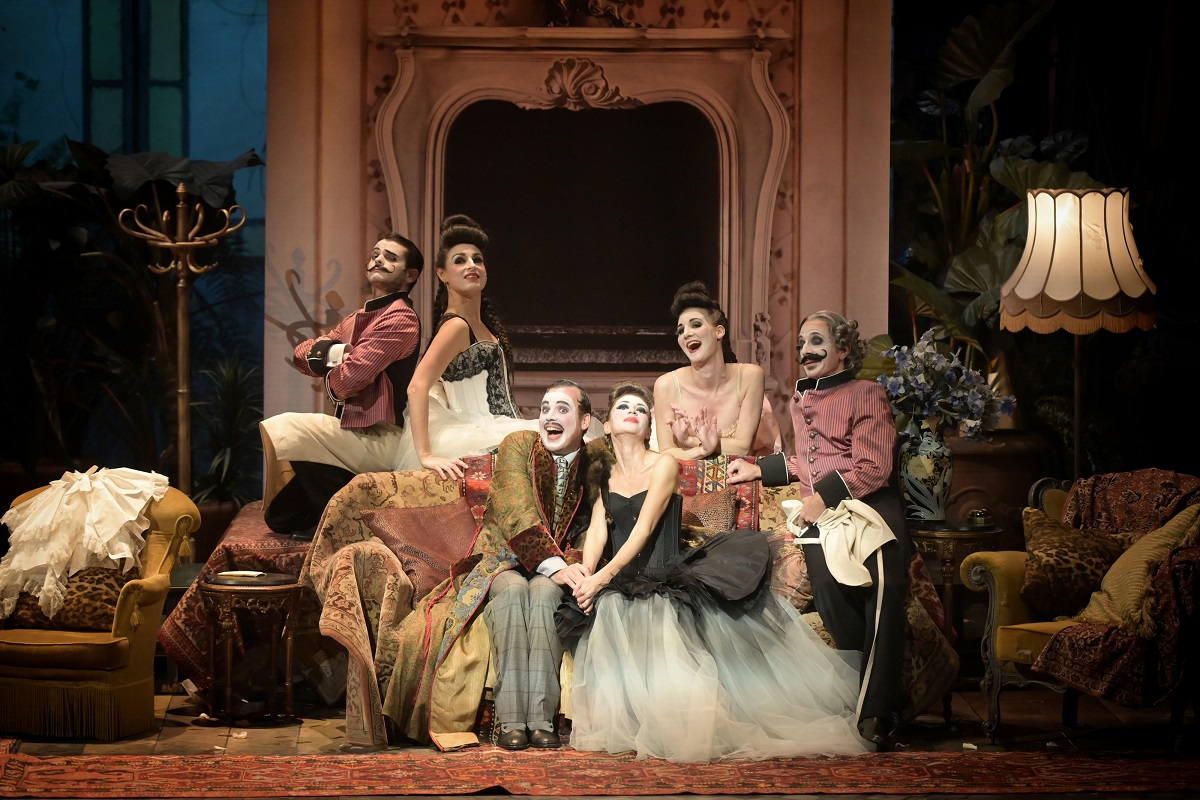Donald Fox
The Jacques Offenbach Society Newsletter
December 2021
In the latest newsletter of the Jacques Offenbach Society (No. 98), there is a reprint of the full Meilhac & Halévy play Le Photographe in an English translation. It’s particularly interesting because it contains the same characters and almost the same plot as La Vie parisienne. The latter was just revived by Palazzetto Bru Zane in its supposedly “original” – never heard before – version.

A photographer in the streets of Paris today. (Photo: Alicia Steels / Unsplash)
We got permission from Donald Fox to put his introduction to the The Photographer from The Jacques Offenbach Society Newsletter online. This is what Mr. Fox has to say about the play:
The major interest of this one-act comedy by Meilhac & Halévy for us today lies in the fact that it contains the same characters (two with the same names) and a variation of the same plot as La Vie parisienne.

Poster for “La Vie parisienne” and the original 1866 production.
Here you will find the rich dandy, Raoul de Gardefeu (pretending to be somebody else) and the beautiful courtesan Métella (who is both Gardefeu’s lover and, here, the actual lover of a foreign baron – from Austria, not Sweden). Here are the baron and the baroness themselves (with their names changed slightly from Gondremarck to Gourdakirsch). Here we have Gardefeu’s servant (named Alexandre, not Alphonse or Joseph, but still with a mind of his own). And here, instead of pretending to be a guide for Paris’s Grand Hôtel in order to seduce the baroness, Gardefeu literally “sets himself up” as one of the city’s fashionable photographers (and note the reference to his fellow tradesman/artist, the well-known Nadar).
Imagine that Shakespeare had written a one-act play that featured the first appearance of his bragging (but endearing), would-be seducer Falstaff … before the more extensive roles that this famous character played in the two parts of Henry IV and in The Merry Wives of Windsor. This would give us something similar to the relation between The Photographer and La Vie parisienne.

Ludovic Halévy (seated) and Henri Meilhac. (Photo: www.artlyriquefr.fr)
The former was premiered on Christmas Eve, 1864 at the Palais-Royal theatre; the latter opened on October 31, 1866 – at the same theatre. The four male actors in The Photographer will also appear in La Vie parisienne – with their roles slightly jumbled, so to speak.
Here, Gil Pères is Gardefeu, not Bobinet, the other dandy of La Vie; Lassouche, the future Urbain, is the baron; Priston, who will be Gardefeu, is his servant Alexandre; and Martal, who in La Vie is Gardefeu’s former servant Joseph, makes a brief appearance as a shop assistant. (But for the female roles in The Photographer, I have not found any mention of “Mmes. Ferraris, Antonie and Elisa” – who no doubt were well-known actresses at the time.)
There is an additional interest in The Photographer – but it would require a lengthy introduction, if not an entire book. This play is just one of the great number (some twenty-two!) of comedies that flowed from the joint pen of Meilhac and Halévy from 1862 to 1880 which didn’t have musical numbers and which didn’t become “famous” – with the exception of their 1872 Le Reveillon which has since been performed almost every New Year’s Eve in its transformation by Haffner, Genée and Strauss into Die Fledermaus.
For me, the introduction, or the book would start with how their April 1873 one-act play, L’Été de la Saint Martin is a miniature version, without music, of the charming operetta Pomme d’Api which premiered five months later.
I have not yet read all of the eight volumes of the Théâtre de Meilhac et Halévy. These of course contain their “greatest hits” with Offenbach, including the first, Le Brésilen of May 1863 – but missing Le Château de Toto of May 1868 (which, to allude to Shakespeare again, is similar to how some of his plays did not “make it” into the First Folio!)
We owe a debt to Richard Duployen for his excellent translation. He did this some years ago, with an eye on getting it staged. I made the editorial decision to preserve his having the Austrian baron speak … English with a German accent.
And in an effort to make this as faithful to the original as possible, I have copied the format used in the eight volume edition of introducing each scene with a list of the characters present on stage, and in giving their names in full above the dialogue.

The servants dressing up and getting ready to party in “La Vien Parisienne” in Rouen. (Photo: Vincent Pontet / Palazzetto Bru Zane)
My hope is that the extra white space this creates will be pleasing to the eye – as it is in the original. To borrow what Thomas Carlyle wrote about getting his first copy of Boswell’s Life of Johnson, “I remember the day when I opened the airy volumes of the Théâtre de Meilhac et Halévy as one of the sunny spots in my existence.”
If you are interested in reading the entire play in the newsletter of the Jacques Offenbach Society, you can subscribe to the newsletter (four yearly issues = 30 dollars) by contacting Richard Duployen (richardduployen[@]mail.com) if you live outside of the USA; if you are inside the United States, then contact Donald Fox at revdhfox[@]aol.com.
